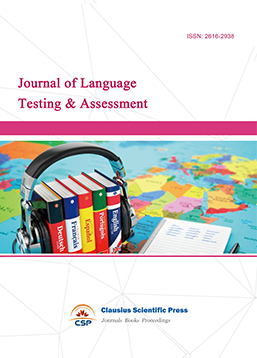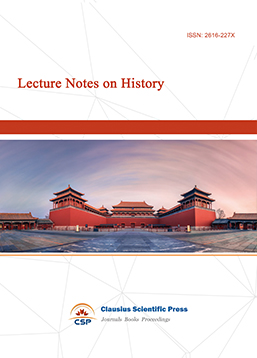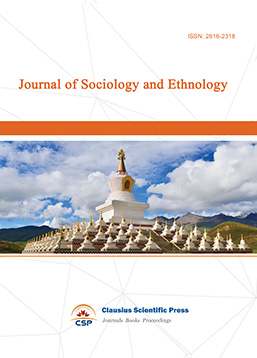Platform Capitalism: Social Gamification in Innovative Advertising Practice of the App
DOI: 10.23977/mediacr.2024.050417 | Downloads: 29 | Views: 785
Author(s)
Jinhou Zheng 1
Affiliation(s)
1 Department of Media Studies, University of Virginia, 217 Wilson Hall University of Virginia, Charlottesville, Virginia, the United States
Corresponding Author
Jinhou ZhengABSTRACT
This article attempts to discuss the innovative application of gamification measures in mobile App design. Currently, many apps continue to incorporate gamification measures, aiming to increase user engagement within the platform and enhance interaction among users. This article argues that gamification measures have essentially become a means of platform capitalism, aiming to exploit users' attention and time spent within the app for extended periods, while concealing suppliers' advertisements in the form of games and interactions during everyday app usage activities. This represents an innovative advertising practice within apps, encouraging active user participation through gaming and rewards, and creating competitive and entertainment effects through integration with social networks. This article presents case studies of three innovative app designs: Pinduoduo, the live bullet interactive screen game on Chinese TikTok, and WeChat mini-games programs, to illustrate these points. The research suggests that future software designs will gradually strengthen the concept of social gaming, making them not only easy to spread but also difficult for users to resist.
KEYWORDS
Platform capitalism, Gamification, App design, Digital economy, Entertainment advertisement, Douyin, Pinduoduo, WeChatCITE THIS PAPER
Jinhou Zheng, Platform Capitalism: Social Gamification in Innovative Advertising Practice of the App. Media and Communication Research (2024) Vol. 5: 122-128. DOI: http://dx.doi.org/10.23977/mediacr.2024.050417.
REFERENCES
[1] Srnicek, N. (2017). Platform capitalism. John Wiley & Sons.
[2] Van Dijck, J., Poell, T., & De Waal, M. (2018). The platform society: Public values in a connective world. Oxford university press.
[3] Ens, N., & Márton, A. (2024). "Sure, I saw sales, but it consumed me" from resilience to erosion in the digital hustle economy. New Media & Society, 26(1), 71-90. https://doi-org.proxy1.library.virginia.edu/ 10.1177 / 14614448211054005
[4] Fuchs, M., Fizek, S., Ruffino, P., & Schrape, N. (2014). Rethinking gamification. Meson press.
[5] Plantin, J.-C., & De Seta, G. (2019). WeChat as infrastructure: The techno-nationalist shaping of Chinese digital platforms. Chinese Journal of Communication, 12(3), 257–273. https://doi.org/10.1080/17544750.2019.1572633
[6] Shen, H., Faklaris, C., Jin, H., Dabbish, L., & Hong, J. I. (2020). "I can't even buy apples if I don't use mobile pay?" Proceedings of the ACM on Human-Computer Interaction, 4(CSCW2), 1–26. https://doi.org/10.1145/3415241
[7] Zheng, J. (2024). What do TEMU and Pinduoduo want? A blessing or a plague? Applying Walkthrough Methods to Analyze Chinese "Social-Commerce" Models. https://doi.org/10.18130/TN8T-ZZ11
[8] Huang, W. (2013). China's Happy Farm and the Impact of Social Gaming. Education about Asia, 18(2), 21–25. https://www.asianstudies.org/publications/eaa/archives/chinas-happy-farm-and-the-impact-of-social-gaming/
[9] Hjorth, L., & Arnold, M. (2013). Playing at being social: a cross-generational case study of social gaming in Shanghai, China. In Gaming globally: Production, play, and place (pp. 101-117). New York: Palgrave Macmillan US.
[10] Hou, J. (2011). Uses and gratifications of social games: Blending social networking and game play. First Monday, 16(7). https://doi.org/10.5210/fm.v16i7.3517
[11] Park, T., Hu, T., & Huh, J. (2016, October). Plant-based games for anxiety reduction. In Proceedings of the 2016 Annual Symposium on Computer-Human Interaction in Play (pp. 199-204).
[12] Wu, P. C. (2013). Addictive behavior in relation to the Happy Farm Facebook application. Social Behavior and Personality: an international journal, 41(4), 539-553.
[13] Zhou, F., & Zhou, X. (2022). "Across Time and Space, I Am Together with Many, Many Others": Digital Writing and Temporality on Chinese Social Media. Social Media + Society, 8(3). https://doi-org.proxy1.library. virginia. edu/10.1177/20563051221117564
[14] Li, B., Naraine, M. L., Zhao, L., & Li, C. (2023). A Magic "Bullet": Exploring Sport Fan Usage of On-Screen, Ephemeral Posts During Live Stream Sessions. Communication & Sport, 11(2), 334–355. https://doi.org/10.1177/21674795211038949
[15] McGloin, R., Hull, K. S., & Christensen, J. L. (2016). The social implications of casual online gaming: Examining the effects of competitive setting and performance outcome on player perceptions. Computers in Human Behavior, 59, 173-181.
| Downloads: | 18583 |
|---|---|
| Visits: | 419924 |
Sponsors, Associates, and Links
-
Journal of Language Testing & Assessment

-
Information and Knowledge Management

-
Military and Armament Science

-
Journal of Human Movement Science

-
Art and Performance Letters

-
Lecture Notes on History

-
Lecture Notes on Language and Literature

-
Philosophy Journal

-
Science of Law Journal

-
Journal of Political Science Research

-
Journal of Sociology and Ethnology

-
Advances in Broadcasting


 Download as PDF
Download as PDF